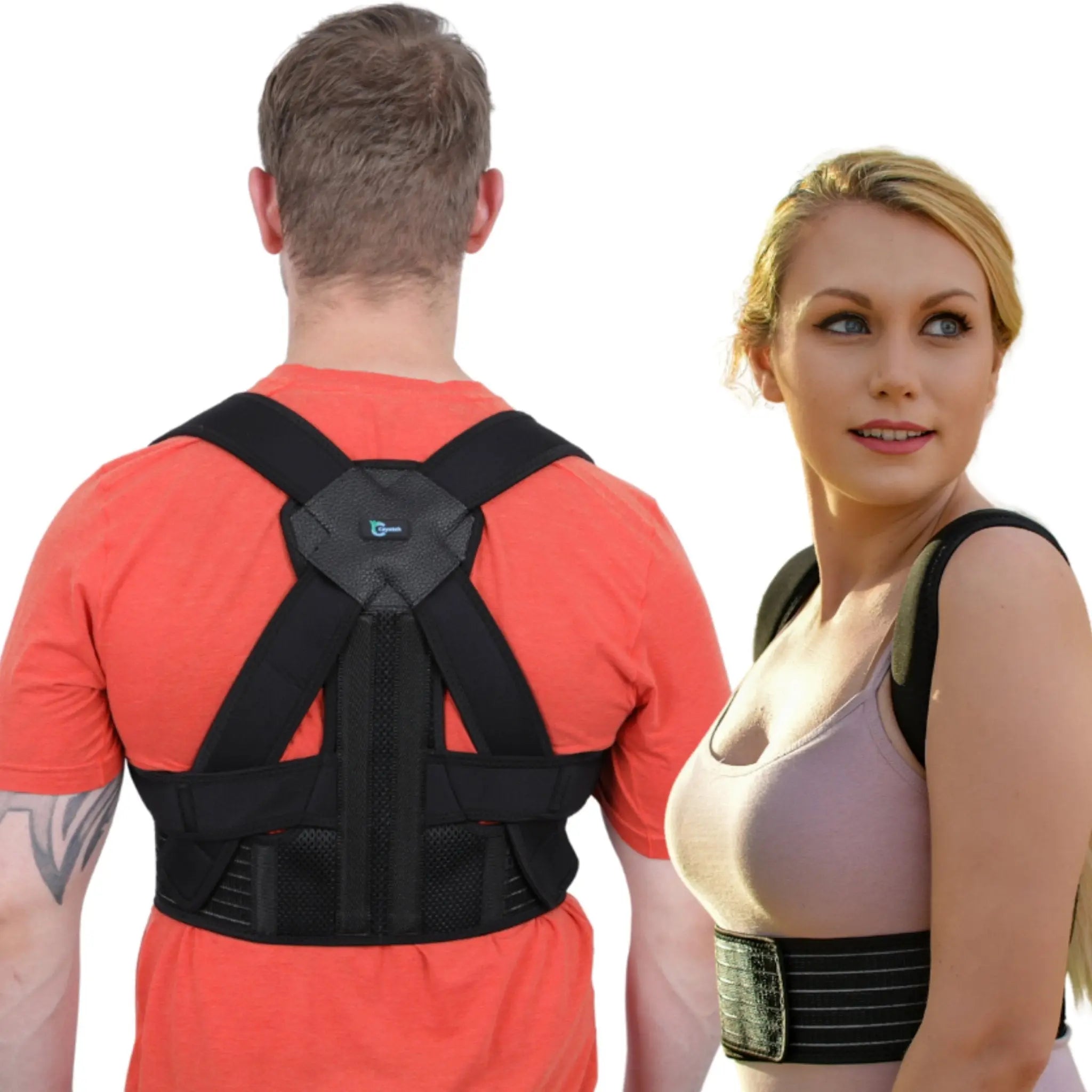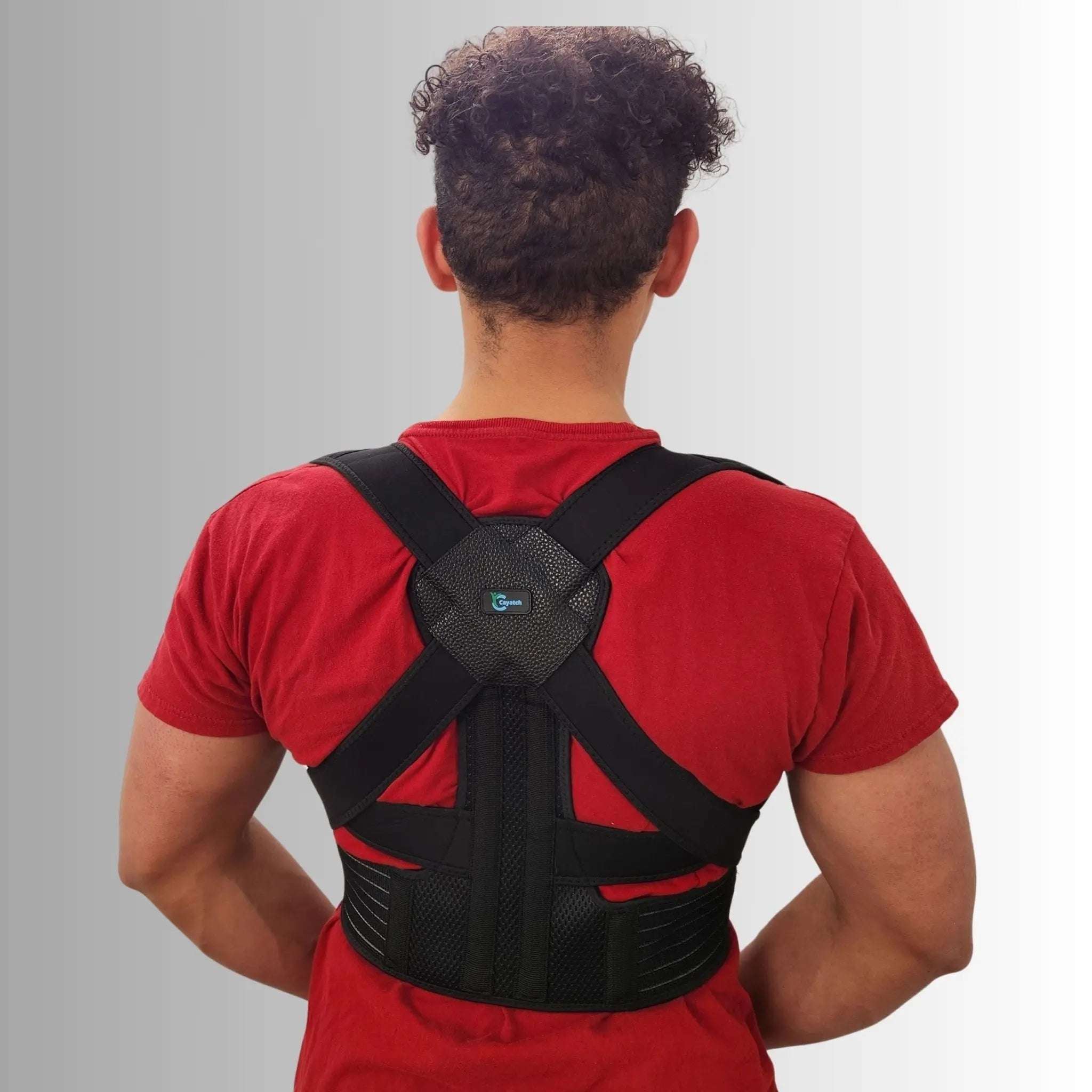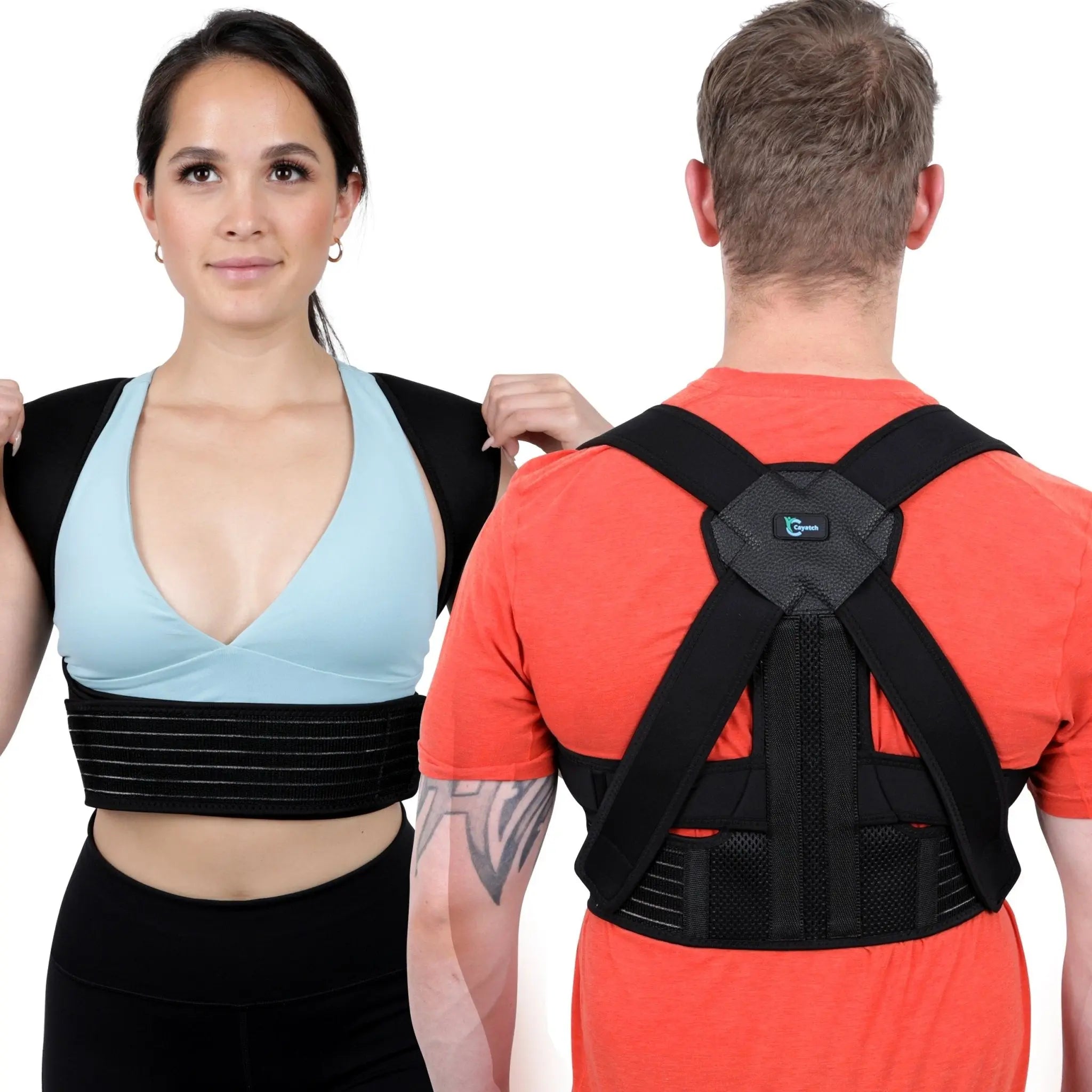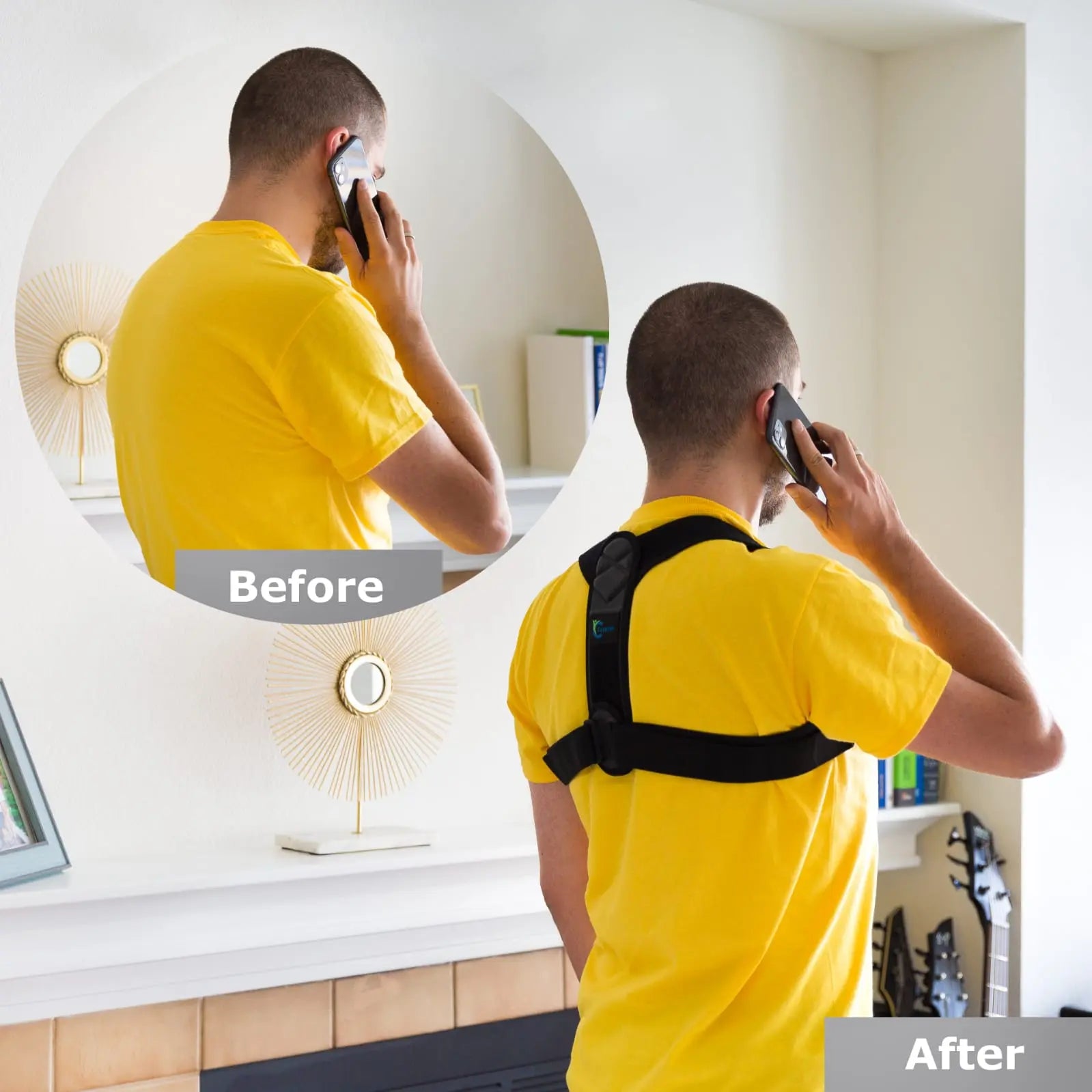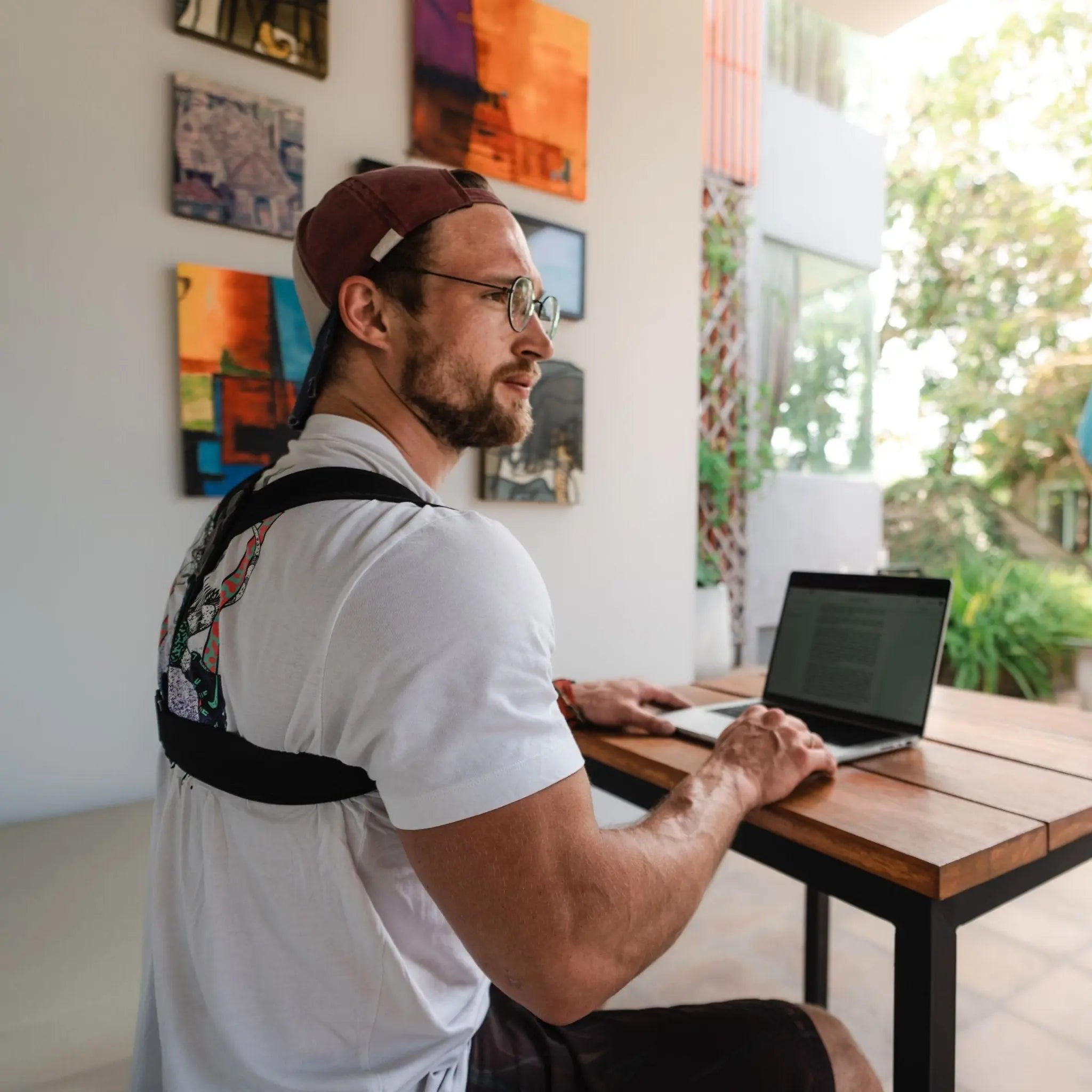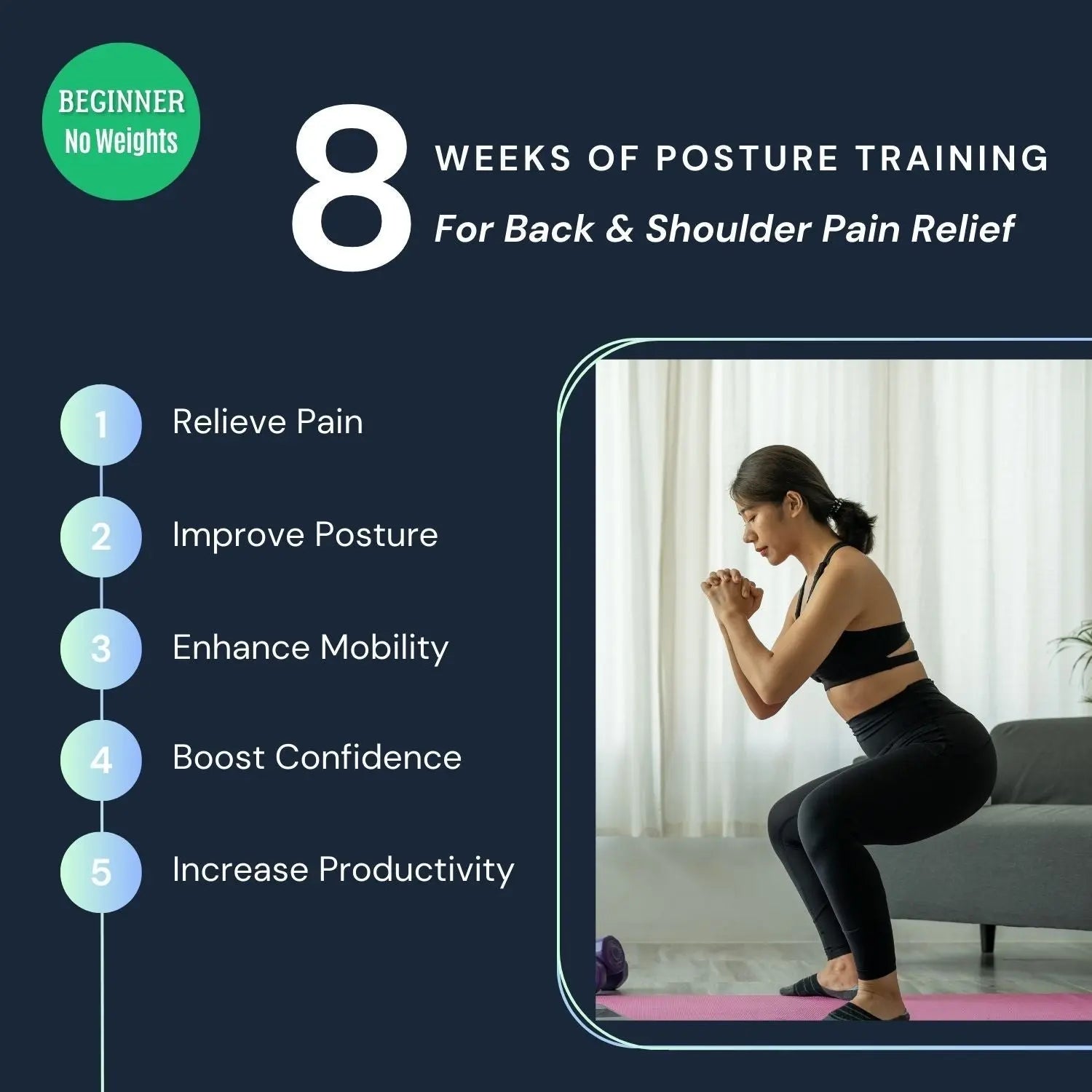A 30-Day Posture Challenge | Achieving Better Posture

As sedentary lifestyles and constant screen time become the norm, healthy posture frequently takes a backseat. However, the importance of maintaining an upright position cannot be emphasized enough.
Proper posture is essential for our health and well-being in more ways than one. It has far-reaching effects on our physiological and psychological well-being.
Are you ready to take responsibility for your body and, by extension, your life? The purpose of the 30-Day Posture Challenge is to assist you in doing just that.
This challenge is not about making temporary changes but creating permanent habits to improve your life. So, let's embrace a more confident sense of self and prepare to walk taller and happier.
30-Day Posture Challenge: Elevate Your Overall Lifestyle

Chronic discomfort, mobility issues, and even our sense of self-worth can all result from slouching. Fortunately, the transformative power of a 30-day posture challenge can help you address this issue head-on.
Week 1: Posture Awareness
This week focuses on understanding the effects of poor posture and developing an awareness of your own posture. You will learn the basics of good posture and assess your posture to identify areas that need improvement.
Day 1: Understanding Posture Basics
One must first cultivate good posture to project an image of health and self-assurance. In preparation for the 30-day posture challenge, the first step is to grasp the fundamentals of good posture.
Maintaining a neutral and straight bodily posture is what we mean when discussing alignment. When standing, your ears, shoulders, hips, knees, and ankles should form a straight line.
When sitting, keep your feet flat on the floor and maintain a neutral spine position. Maintaining your balance is crucial for good posture. Whether standing or sitting, distribute your weight evenly between both feet.
Day 2: Assessing Your Current Posture

To improve your posture, you must first become aware of its current state. Check your posture by following these steps:
- Wear form-fitting clothes, like shorts and a fitted T-shirt, and stand in front of a full-length mirror to see how your body is positioned.
- Pay attention to the position of your head and neck.
- Observe how you're holding your shoulders.
- Examine your spine from the side to ensure proper alignment.
- Verify that your legs and feet are in a straight line.
- Focus on maintaining a stable center of gravity by monitoring your weight distribution between your feet.
- Note any areas of pain or discomfort as you assess your posture.
- Take photographs of yourself from the front, side, and back to get a comprehensive view of your posture. Issues that may be difficult to spot in the mirror may become apparent in a visual record.
Day 3: Common Posture Problems
Learn how to correct common posture issues, including rounded shoulders, forward head posture, and a forward pelvic tilt. Recognizing these problems is the first step toward addressing them.
Day 4: The Impact of Poor Posture on Health
Discover how poor posture can negatively affect your overall health. Investigate whether there is a link between bad posture and issues such as headaches, back discomfort, and impaired lung capacity. Understanding the consequences can serve as motivation to make positive changes.
Day 5: Daily Posture Check-Ins
Incorporate daily posture checks into your routine. Throughout the day, remind yourself to assess your posture and make necessary adjustments, perhaps by setting alarms or using other reminders. Consistency is key to making progress.
Day 6: Ergonomics and Workspace Setup
Gain knowledge about ergonomic concepts and implement them in your workplace. Make adjustments to your chair, desk, and computer monitor to create an environment that promotes good posture. Your workstation should encourage healthy posture, not hinder it.
Day 7: Recap and Progress Checkpoint
Reflect on the first week of the challenge. Consider the improvements you've made to your workspace and the results of your posture assessments.
By the end of this week, you'll have a solid understanding of posture, its impact on your health, and the specific issues you need to address.
Week 2: Posture Exercises

The second week will focus on posture-specific exercises designed to enhance your alignment, balance, and core strength. These exercises will be categorized to target your specific needs.
Day 8: Introduction to Posture Exercises
Begin by understanding the importance of the exercises you undertake on your journey to better posture. Appreciate the significance of these exercises and prepare for the activities ahead.
Day 9: Neck and Shoulder Stretches
Relieve tension in your neck and shoulders with a series of stretches. These exercises will increase upper body mobility and alleviate discomfort caused by poor posture.
Day 10: Strengthening the Core
Developing strong abdominal muscles is essential for maintaining healthy posture. Discover workouts that engage your core muscles, improving your posture and spinal support.
Day 11: Upper Back Mobility

Use mobility exercises to address rounded shoulders and poor upper back posture. These movements will help align your shoulders and open up your chest.
Day 12: Lower Back Support
Enhance the strength of your lower back muscles to provide additional support to your spine. These exercises are especially beneficial if you tend to slouch or experience lower back discomfort.
Day 13: Hip and Pelvis Alignment
Learn exercises that focus on aligning your hips and pelvis. Proper alignment in this area is crucial for maintaining balance and reducing strain on your lower back.
Day 14: Incorporating Exercise into Your Daily Routine
Discover how to seamlessly integrate posture exercises into your daily schedule. Consistency is key to improving your posture.
Day 15: Recap and Progress Checkpoint
At this stage, reflect on your journey since the beginning of the second week of the challenge. Have you noticed any improvements in your posture or a reduction in discomfort? Use this checkpoint to stay motivated as you continue to work towards better posture.
Week 3: Lifestyle Changes

During the third week, the focus shifts to how changes in your daily life can significantly impact your posture. These adjustments will help you maintain and even enhance the progress you've achieved through posture exercises.
In week three, you'll discover how to integrate posture-conscious behaviors into various aspects of your daily routine, including eating, sleeping, and managing stress.
Day 16: Healthy Sleeping Posture
Learn why your sleeping position matters and how it can affect your overall posture. Acquire the knowledge and skills necessary to support your spine while you sleep, enhancing your posture on your journey.
Day 17: Posture and Nutrition
Explore the potential connection between diet and posture. Certain foods and nutrients can contribute to the health of your musculoskeletal system and support good posture. Develop a personalized diet plan based on your specific needs.
Day 18: Stress Management and Posture
Discover strategies to manage stress effectively, as stress can lead to slouching and impact your posture. Learn techniques that promote comfortable posture, whether you're sitting or standing upright.
Day 19: Posture at Work

Address workplace-related posture issues to maintain excellent posture throughout your workday, whether you work at a desk or engage in physically demanding labor.
Day 20: Posture While Driving
Given the significant amount of time spent behind the wheel, learn how to maintain proper posture while driving. This will help prevent discomfort and fatigue during your time on the road.
Day 21: Benefits of Yoga and Pilates
Explore the advantages of incorporating yoga and Pilates into your routine. These exercises can enhance flexibility, balance, and core strength, all of which are crucial for maintaining excellent posture. Understanding their benefits will aid you in making informed choices on your journey.
Day 22: Consistency and Accountability
Investigate various methods for maintaining consistency in your posture improvement journey. Being accountable to yourself and your goals is essential for sustainable progress. Ensure you remain consistent so that your progress doesn't falter after a few days.
Day 23: Recap and Progress Checkpoint
Reflect on the third week of the challenge and consider how the lifestyle adjustments you've implemented may have influenced your posture.
Week 4: Fine-Tuning Your Posture
As you enter the fourth week, you're just one week away from completing your challenge. Now, we'll focus on some remaining aspects that will enhance your journey.
Day 24: Daily Posture Challenges
Challenge yourself with daily tasks that involve maintaining proper posture. These exercises in various settings will help you continue to develop and sustain excellent posture habits.
Day 25: Incorporating Breathing Techniques
Learn effective breathing techniques that make it easier to maintain good posture. By taking slow, deep breaths and engaging your diaphragm, you can provide essential support to your abdominal muscles and overall posture.
Day 26: Maintaining Posture During Exercise

Discover how to maintain proper posture while engaging in various physical activities. Correct form during strength training and cardiovascular exercise is vital for reducing the risk of injury and optimizing the benefits for your posture.
Day 27: Posture and Mental Wellbeing
Explore the potential connection between posture and mental health. Working on maintaining good posture can boost your confidence, reduce stress, and enhance your overall mood and mental well-being.
Day 28: The 28-Day Posture Challenge Wrap-Up
Take a moment to reflect on your progress during the 30-day posture challenge. Celebrate how far you've come and the positive changes you've made in both your posture and your overall health.
Day 29: Reflections and Future Goals
Spend time contemplating your journey toward better posture. Consider the lessons you've learned, the routines you've established, and the goals you wish to pursue in the future to maintain and further improve your posture.
Day 30: Celebrating Your Posture Transformation
Congratulations on successfully completing the 30-day posture challenge! Take this moment to acknowledge the improvements you've made in your posture. It's time to celebrate your achievements and carry the knowledge gained into your next challenge.
Tools and Resources
Now, let's explore some tools and resources to support your posture-correcting journey. These tools are effective in enhancing your overall approach and making the challenge easier.
Suggestions for Posture Improvement Equipment

Wearable posture correctors come in various forms and serve as gentle reminders to maintain good posture.
Back braces and posture-correcting shirts are just a couple of examples. Explore different types of posture correctors that can provide assistance.
Additionally, consider creating a workspace that promotes good posture by investing in ergonomic office equipment such as standing desks, ergonomic chairs, and computer monitor stands.
For exercise and flexibility, you can use yoga and fitness equipment like mats, resistance bands, stability balls, and yoga blocks.
Using a foam roller is an excellent way to release muscle tension and improve mobility in postural muscles, including those in the upper back and hip flexors.
Apps, Websites, And Specialized Programs To Assist You!

Designed to complement a tech-enabled posture corrector device, the "Upright Go" app encourages users to maintain proper posture. It offers real-time feedback on your posture and tracks your progress over time.
For Android users, there's the "Posture Trainer" app, and iOS users can benefit from the "Posture Reminder" app. These apps serve as constant reminders to assess and adjust your posture.
Apps like "PostureScreen Mobile" utilize your smartphone's camera to perform a comprehensive examination and analysis of your posture.
Websites like "PostureZone" offer various tools to help you monitor and manage your posture while browsing the internet.
Books And Journals Recommendations
Several books and journals can enhance your posture-improvement journey. Consider exploring "The New Rules of Posture" by Mary Bond, which delves into the relationship between movement, posture, and body awareness.
It provides valuable strategies and physical exercises to enhance all three aspects.
Pete Egoscue's "The Egoscue Method of Health Through Motion" explains how to improve your posture and overall health through movement therapy.
In "The Vital Psoas Muscle: Connecting Physical, Emotional, and Spiritual Well-Being," Jo Ann Staugaard-Jones explores the role of the psoas muscle in maintaining proper posture and overall well-being.
Frequently Asked Questions (FAQs)
What helps address postural issues?
Correcting poor posture involves exercise, dietary adjustments, and self-awareness. Engaging in regular posture exercises, optimizing your workstation ergonomics, and maintaining awareness of your posture throughout the day can all contribute to better posture.
What are the most common posture problems?
Common posture issues include slouching while seated or standing, rounded shoulders, excessive lower back curvature (lordosis), forward head position (often associated with "text neck"), and anterior pelvic tilt.
What factors affect posture?
Genetics, muscular strength and flexibility, lifestyle behaviors (such as prolonged sitting), ergonomics, stress levels, and a history of injuries all contribute to posture-related issues.
What are the four principles of good posture?
Four key principles for maintaining proper posture include:
- Keeping your body in a neutral, straight position.
- Distributing your weight evenly between both feet when standing or sitting.
- Engaging your core muscles to support your spine and pelvis.
- Keeping your shoulders and neck relaxed to promote relaxation.
Conclusion
The benefits of good posture extend beyond the physical, encompassing increased self-esteem and overall happiness. Along the way, you've acquired new knowledge, strengthened your muscles, and adopted healthier habits.
These efforts may lead to reduced discomfort, increased energy, and an overall enhancement in your well-being.
Even though the challenge has concluded, it's important to commit to maintaining proper posture permanently. Continue the habits you've developed, including regular exercise and any necessary ergonomic adjustments.
Now that you understand the advantages of the 30-day posture challenge, consider encouraging your loved ones and colleagues to embark on their own posture-improvement journeys. Together, we can spread the message of good posture and inspire others to embrace it.























